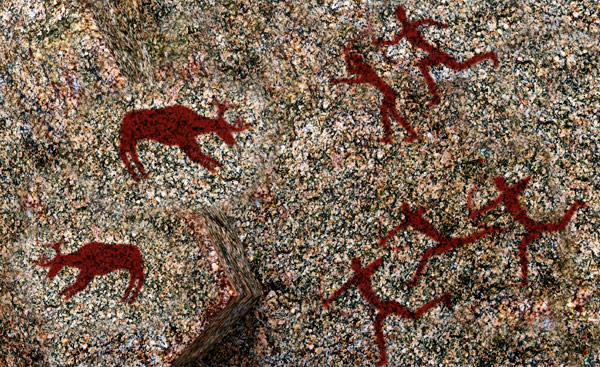Evolution of Our Genes

The Evolution of Our Genes
Our gene selections over several hundred thousand years were driven by cycles of feast and famine on one hand and physical activity and rest on the other. By evolution, regular physical activity and periodic fasting are required to maintain normality of specific metabolic functions. We quote from the pioneering work of Manu Chakravarty et al 1.
It was proposed that the survival of Homo sapiens during evolution was dependent on the procurement of food, which in turn was dependent on physical activity. However, food supply was never consistent. Thus it is contended that the ancient hunter-gatherer had cycles of feast and famine, punctuated with obligate periods of physical activity and rest. Hence, gene selection in the Late-Paleolithic era was probably influenced by these two cycles.
To ensure survival during periods of famine, certain genes evolved to regulate efficient intake and utilization of fuel stores. Such genes were termed “thrifty genes” in 1962 and they most likely included genes to metabolize Medium Chain Triglycerides to provide Ketone bodies as energy to the brain during famine.
Furthermore, convincing evidence shows that this ancient genome has remained essentially unchanged over the past 10,000 years and certainly has not changed in the past 40–100 years. Although the absolute caloric intake of modern-day humans is likely lower compared with our hunter-gatherer ancestors, it is nevertheless in positive caloric balance in the majority of the US adult population mainly due to the increased sedentary lifestyle in present society. It is contended that the combination of 24 X 7 continuous food supply and lack of physical inactivity eliminates the evolutionarily programmed biochemical cycles emanating from feast-famine and physical activity-rest cycles. This in turn abrogates the cycling of certain metabolic processes and ultimately result in metabolic derangements such as obesity, type 2 diabetes, cardiovascular disease and possibly cancer.
A study of chimpanzees, gorillas and orangutans of 40 years or older, indicate the rarity of neurodegenerative diseases. Also, rodent or primate models have not shown the extensive neuronal loss characteristic of human Alzheimer’s disease 2.
In this context, we postulate that perhaps excess carbohydrate consumption that ensued in the aftermath of grain production and consumption and perfected during the agricultural revolution, is the driver of modern diseases. Our western diet is high carbohydrate, sugar predominant and devoid of good fats. The solution is to reduce carbohydrate/sugar consumption and increase protein and good fats content in our diets, in addition engaging in physical activity and periodic fasting.
It is important to use foods that conform to evolutionary and metabolic principles and are supported by scientific research.
- Manu Chakravarty et al, J Appl Physiol 96:3-10, 2004.
- Caleb Flinch, PNAS 2010 vol. 107, 1718-24
Disclaimer
Before starting any diet, you should speak to your doctor. You must not rely on the information on this website as an alternative to medical advice from your doctor or other professional healthcare provider. If you have any specific questions about any medical matter, you should consult your doctor or other professional healthcare provider. If you think you may be suffering from any medical condition, you should seek immediate medical attention. You should never delay seeking medical advice, disregard medical advice or discontinue medical treatment because of information on this website.









